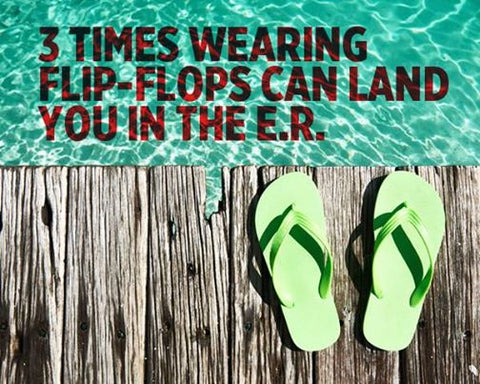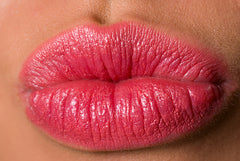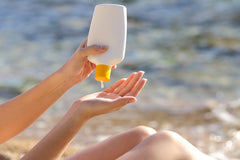Crossfoot: 5 tips to finding the right shoes for crossfit

With CrossFit being the latest workout that is all the craze, do you have the right shoe gear to conquer your workout? Here are 5 tips to find the right shoes that will put the “fit” in CrossFit!
Lightweight
The key for any CrossFit workout is to allow your feet to perform in as close to a minimalistic natural state as possible. The rigors of CrossFit subjects your body to maximum physical exertion. There’s no need to carry anymore unnecessary weight on an already taxing workout. Remember, any shoe for CrossFit should yield the feeling and freedom of being shoeless while providing the comfort and protection of a proper fitting shoe.
CrossFit Activities of Interest: Running, Box jumping, Jump rope
Minimal Heel to Toe Drop
Your heel should not be in a raised position when sporting the ideal CrossFit kick. Having increased cushioning in heel- as opposed to the forefoot- can transfer too much weight towards the toes with any activities involving planting your feet firmly. Also, increased cushioning in the heel promotes premature heel strike impact when landing, giving way to increased pressures to the heel that can be detrimental long term. Instead, cushioning should be as consistant as possible from heel to toe. This allows for pressure and shock absorption to disperse evenly across your feet with activity.
CrossFit Activities of Interest: Any crossfit activity
Minimal Tread
It is always best to “tread lightly” when on lookout for the right shoes for CrossFit. Less tread on the outsole creates more stability, allowing you to stand firm. Shoes with more extensive treading can cause you to lose your footing which may lead to injury.
CrossFit Activities of Interest: Burpee, Squats, Lunges
Wide Toe Box
Our feet naturally expands outward (called splaying) with weightbearing or establishing a firm stable stance. That’s why you want to make sure to find the right shoes with a toe box that can accommodate for the expansion. But take care to not sport shoes that give too much room. Find shoes that are roomy enough for comfort, but snug enough to prevent side-to-side movement.
CrossFit Activities of Interest: Deadlifting, Kettlebell swinging, Tire flipping
Breathable
An intense crossfit workout is best tackled with shoes that are made with breathable- often mesh- material. As heat build-up mounts, mesh lining provides increased ventilation helping control sweating which can minimize problems such as chaffing, foot odor, slippage within the shoe, and the formation of blisters.
Crossfit Activities of Interest: Any crossfit activity
Check our Soul Searching Series and Get Sporty for more info on finding the right shoes for the right activity!
Putting your best FEET forward,
SH
Can I get athlete's foot from my yoga mat?

Southern Hospitality answers the question: Can I get athlete's foot from my yoga mat? Courtesy of YouBeauty!
Putting your best FEET forward,
SH
5 Ways to Keep Your Feet Infection-Free in Public Places

Whether you’ve made the trek off to college or have a knack for going barefoot in public facilities, there is no doubt that you will need to protect yourself from the dreaded staph infection. Not just any staph infection, but MRSA (Methicillin-resistant Staphylococcus aureus). Staph infections are spread through skin-to-skin contact. However, MRSA is a form of bacteria that is resistant to common antibiotics used to treat other forms of staph infections. Contact with MRSA can range from just a simple pimple on the skin to a severely invasive infection that can lead to amputation. College dorms, gyms, locker rooms, public pools and hospitals are all common breeding grounds for MRSA. Here are 5 ideas to follow to keep your feet infection-free!
Protect Open Wounds: Any cuts, wounds, or breaks in the skin give easy access for bacteria to invade your body and cause an infection. The solution? Make sure these areas are securely covered to prevent being infected. It is also great as an added precaution to inspect your feet regularly depending on how frequent you share public facilities.
Wash Socks After Use: The warmth and moisture from your feet absorbed by your socks can allow bacteria to fester. You should never where the same pair of socks for consecutive workouts. Instead, wash them after working out and sport a fresh clean pair for each workout.
Don’t Share Personal Items: Sharing is NOT caring in the case of MRSA. Personal items such as towels, razors, shoes, or even socks can bring you in direct contact with the bacteria. Even if another person’s item may appear to be clean, don’t trust it! You run the risk of not truly finding out until it is too late.
Putting your best FEET forward,
SH
Dx Beach Feet: 4 Ways to Heal Your Summer Heels

Summertime fun means sporting sandals or- in many cases- going barefoot, that exposes your feet to the harsh elements of the season. Check out these 4 tips that are just what the doctor ordered to heal your summer heels!
Wash
It’s just not enough to let the water and suds trickle down to your feet when showering and claim that they are clean. A barefoot day at the beach or a simple saunter in your favorite flip-flops can expose your feet to all sorts of yuck-n-muck. The solution? Take care to give your feet a thorough washing DAILY (that means rubbin’ and scrubbin’). Foot washing is like hand washing and should be done routinely. It is also a great idea to soak your feet with warm water and Epsom salt. Soaking your feet provides a one-two punch of deodorizing and drawing out toxins to keep them funk-free!
Inspect
Bacteria, Virus, and Fungus….oh my! Your feet can become infected with any of these “beauties” with any cuts or openings of the skin. Whether you have the displeasure of stepping on rocks, shells, or any foreign object openings of the skin can be dangerous- large and small. That’s why it is essential to regularly inspect your feet for any open wounds or lesions that may be present. Warts can indicate viruses (such as HPV), while redness, swelling, and/or itching can be signs of bacterial (E. coli) or fungal (Athlete’s foot) infections.
Exfoliate
Unforgiving surfaces such as hot sand and pavement can lead to a load of calluses on the feet. To transition your feet from rough to smooth, exfoliate the callused areas. Be careful to ALWAYS exfoliate WET skin- preferably when showering or soaking. Tools, such as pumice stones or foot files are most aggressive, but scrubs can also do the trick.
Moisturize
Once you remove the skin you don’t want, you always want to show a lil love to the skin you do want. And nothing says T-L-C like a rich moisturizer. A daily slather of moisturizer to clean feet smoothes the skin and provides nutrients to make your feet very supple. It’s the perfect finish to healing those summer heels!
Oh!...and as always, if you’re going to continue to be out in the sun… DON’T forget the sunscreen!!
Putting your best FEET forward,
SH
Get Sporty

Getting a leg-up on some of your favorite outdoor activities often means finding the right shoes for the task-at-hand (err foot!). Check out these features to keep in mind when spotting the right shoes to get sporty!
Walking:
Whether you’re an avid walker or just in-need of a solid athletic shoe, this style is for you! You want a walking shoe that is lightweight allowing easy, comfortable mobility. Cushioning and shock absorption should be sufficient, but not be overly rigid. Instead, the sole should have flexibility and a rounded bottom, enabling a fluid motion for heel striking and toeing off, when walking.
Running:
Running can expose your feet to forces up to 3 times your body weight. Look for a running shoe that has ample shock absorption. This protects your feet from taking a beating when pounding the pavement over time. Running is a higher impact activity than walking, so it is a good idea for your running shoe to have a rigid sole (NOT flexible). The rigid sole should ONLY bend at the ball of the foot.
Hard Surface Activities:
Hard surface activities can mean murderous wear-n-tear not only to your feet BUT to your shoes, as well! That’s because these activities- such as basketball and tennis-involve lateral movements, abrupt stopping, and running. A quality basketball shoe should have thick shock absorption and a rigid sole to offload impact from running and jumping. It is recommended that basketball shoes are high-tops to provide added stability with lateral movement. High-tops are also believed to aid in ankle stability, but do not completely eliminate the risk of ankle sprains/injuries. Tennis shoes should have a thicker sole that is rigid and is only flexible at the ball of the foot for stability and repetitive movements. A sole with more tread is also good to keep in mind for added traction with abrupt stops.
Cross-Trainer:
Like to indulge in a variety of outdoor activities? Then a cross-training shoe might be the way to go. Viewed as a hybrid athletic shoe, this style combines features form various specialty shoes to accommodate the jack (or jill)-of-all-trades.
Want more information on finding the right “kicks” for the right activity? Check out our series Soul Searching: 8 Tips to Finding Your Perfect of Athletic Shoes!
Putting your best FEET forward,
SH
Safety's Only Skin Deep

Looks like beauty isn’t the only thing that is skin deep. Check out these 3 common types of skin cancer that can turn YOUR summer into an absolute bummer.
Basal Cell Carcinoma
What is it: The most common form of skin cancer that spreads slowly. Appears as a smooth shiny nodule on the skin.
Who is most likely affected: Individuals with a fair skin complexion are most at risk.
Where does it strike: The face is most common, but can be found on any area of the body subject to long term sun damage
When does it occur: Adults over 40 are most commonly diagnosed.
Squamous Cell Carcinoma
What is it: Aggressive form of skin cancer that begins as a scaly red inflamed nodule that develops into an ulcer. Early diagnosis is key because it spreads very quickly.
Who is most likely affected: Fair skinned individuals beware! But anyone who has been subject to prolonged sun exposure should listen up. Smoking can also be a cause.
Where does it strike: The face and back of the hands are the problem areas for men, while the legs and feet are most common for women.
When does it occur: Adults 55 years or older.
Melanoma
What is it: The most deadly- but least common- form of skin cancer. Usually forms from a pre-existing mole or pigmented lesion that is asymmetrical and deformed. Spreads rapidly.
Who is most likely affected: People with light skin complexions are most at risk, especially those with freckles, red hair, or those who burn easily. However as much as 10% of those affected are of dark complexion.
Where does it strike: Areas most exposed to the sun (noticing a theme here?). The face is a common area for men and the legs for women. The soles of the hands and feet and the nails are most often affected by those with darker skin.
When does it occur: Usually found in those that are 50+, but can occur as early as 30 years of age.
As always, monitor the amount of time that you spend in the sun. If you are going to be exposed to the sun for extended periods of time always apply (and RE-apply) your sunscreen when needed. Inspect your skin regularly, and if you note any changes or formations of skin lesions report to your physician immediately. Early diagnosis is key!
Putting your best FEET forward,
SH
Flip Flopped

See why all sandals are NOT created equal, courtesy of Women's Health Magazine.
http://www.womenshealthmag.com/style/wearing-flip-flops?cid=socST_20140716_27948266
Wanna know what to look for when finding the right sandals? Check out these tips!
Putting your best FEET forward,
SH
5 Areas You Don’t Want to Forget to Apply Sunscreen

So you think you’ve slathered on your sunscreen and are ready for a day of fun in the sun…but have you considered these areas? You better!
From HEAD…
Scalp: 
Whether you’re bald or have long luscious locks, an exposed scalp should not be taken lightly for sun protection. Even the smallest part in your (hair)do can reveal enough skin for the sun to do damage. Studies show that melanoma on the scalp can result in a faster rate of death than any other part of the body.
Ears: 
Arms, legs, and face…CHECK! But did you get your ears? They are the 3rd most common site for skin cancer from the sun and should NEVER go untouched. If sunscreen for your ears doesn’t tickle your fancy, try a nice hat with a wide brim to shield you from the sun.
Lips: 
Did you miss a spot with your sunscreen, but can’t figure out where? It could be right under your nose- literally! That’s right the thinner skin and lack of melanin in your lips make them especially vulnerable to the damage from harmful sun rays. It’s best to use lip balm with SPF to keep your kisser in good condition!
Hands: 
They assist you in applying sunscreen to every other part of your body but it’s easy to forget they need a little help being protected from the sun. The palms may be slathered with sunscreen, but don’t forget the back of your hands.
To TOE…
Feet: 
Going barefoot or wearing sandals means your feet are largely uncovered. That makes your feet very susceptible to sun’s harmful rays. Take care to apply sunscreen to the tops & soles of the feet. Don’t forget between the toes! It is a common hideout spot for melanoma of the feet that should NEVER go unnoticed! Don’t forget the nails!
Putting your best FEET forward,
SH
Sandal Season Survival Series TIP #3: What Lies Beneath

No sandal season is officially underway without finding and sporting the perfect shade of nail polish. But as you polish those lil’ piggies, you may be surprised to know that it's highly recommended that you routinely inspect your nails WITHOUT polish for any lurking signs of skin cancer. We know this may sound like awful news for your summer-ready-pedi but skin cancer can rear its ugly head right under your pretty polished nails. What should you look for? The most notable change can be indicative of malignant melanoma, where a linear mark of increased pigmentation- Hutchinson’s sign- forms on the nail bed (skin underneath the nail). It is also a good idea to examine your cuticles for warts or lesions and the nail itself for any deformities. Every 1-3 months is a suggested time to give your nails a look-see (or sooner depending on your level of sun exposure or prior history of skin cancer). There are brands of nail polish that make the claim of providing UV protection against skin cancer, but it is still recommended that you remove your nail polish periodically to inspect your nails for any possible changes. You cannot check your nails enough and always remember: EARLY DETECTION IS KEY!!
Putting your best FEET forward,
SH
Sandal Season Survival Series TIP #2: Pssst! Your Epidermis Is Showing

Wanna REALLY get sandal season into full swing?...Then sunscreen is an absolute must-have to keep in your arsenal to survive the summer safely. The face, back, arms and legs are all the craze when it comes to applying sunscreen, but it’s also a very good idea to slather the tootsies to protect them from the harmful sun rays. To protect your feet from the sun:
• Apply sunscreen with a minimum Sun Protection Factor (SPF) of 30. You want to lookout for sunscreens that are labeled “water-resistant” and “broad spectrum” that hold up against water exposure and protect you from both UVB (contributes to melanoma) and UVA (causes skin damage) rays.
• Sunscreen should be applied at least 30 minutes prior to going outdoors. It takes approximately 15 minutes for your skin to fully absorb the sunscreen you apply. If you wait until you are outside to apply, you run the harmful risk of your skin becoming scorched by the sun.
• Make sure ALL exposed skin is protected. Wearing sandals means your feet are largely uncovered. That makes your feet very susceptible to sun’s harmful rays. Take care to apply sunscreen to the tops & soles of the feet. Don’t forget between the toes! It is a common hideout spot for melanoma of the feet that should NEVER go unnoticed! With creams you always want to be careful when applying between the toes however. Do not place too much cream in between the toes to prevent any macerations (breakdown) of the skin.
• Reapply! Just because you applied sunscreen before going outdoors does not mean you’re fully protected. You should always reapply sunscreen every 1-2 hours while frolicking in the sun. Certain factors such as water exposure, excessive sweating, and individuals with reduced skin pigmentation may require more frequent reapplications.
No matter if it’s the summertime or any other time of the year, ALWAYS inspect your skin for any potential changes, paying very close attention to any moles or lesions that may be present. If you suspect any changes in your skin, report to your physician immediately!
Tip #3 on the way…
Putting your best FEET forward,
SH




